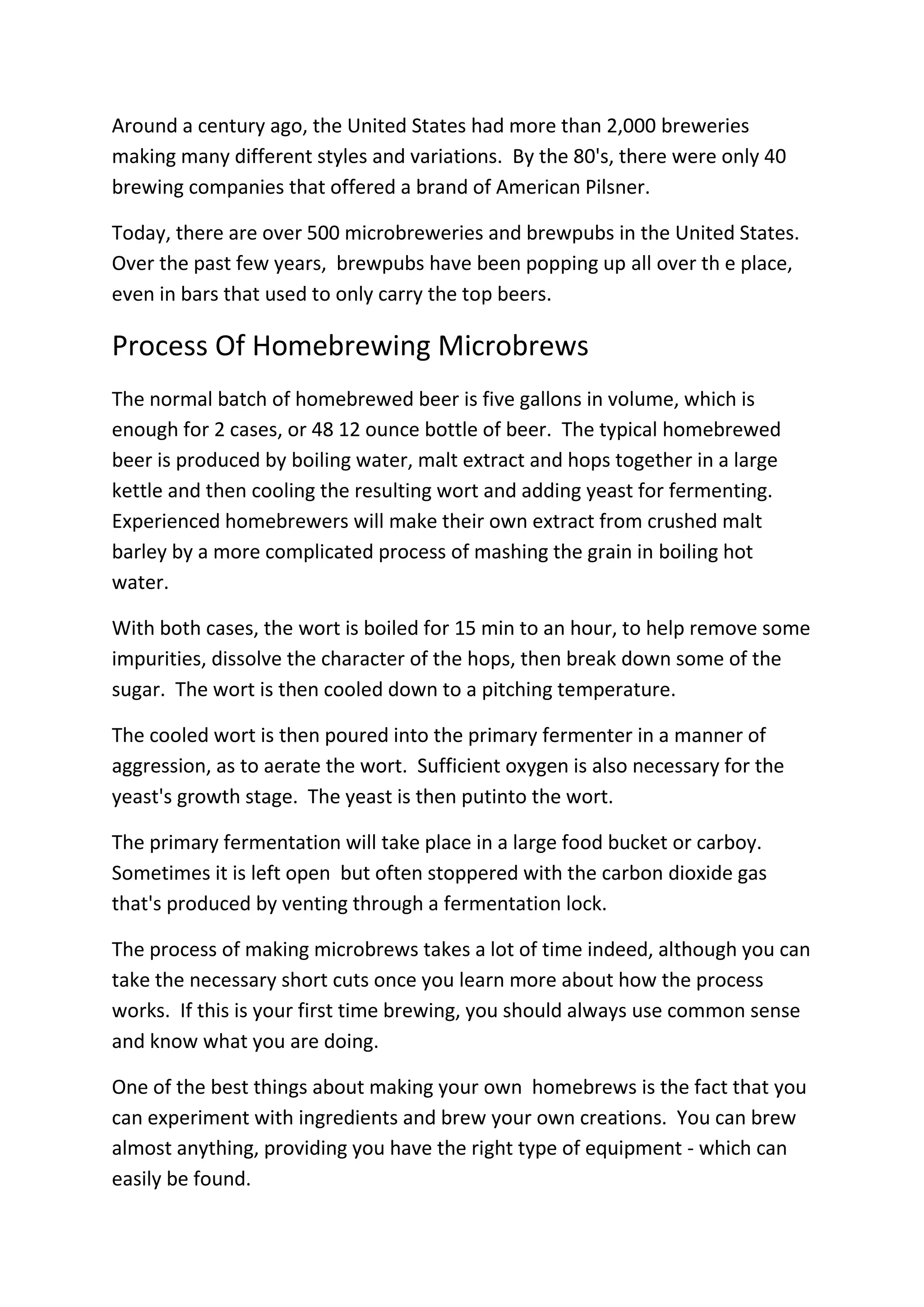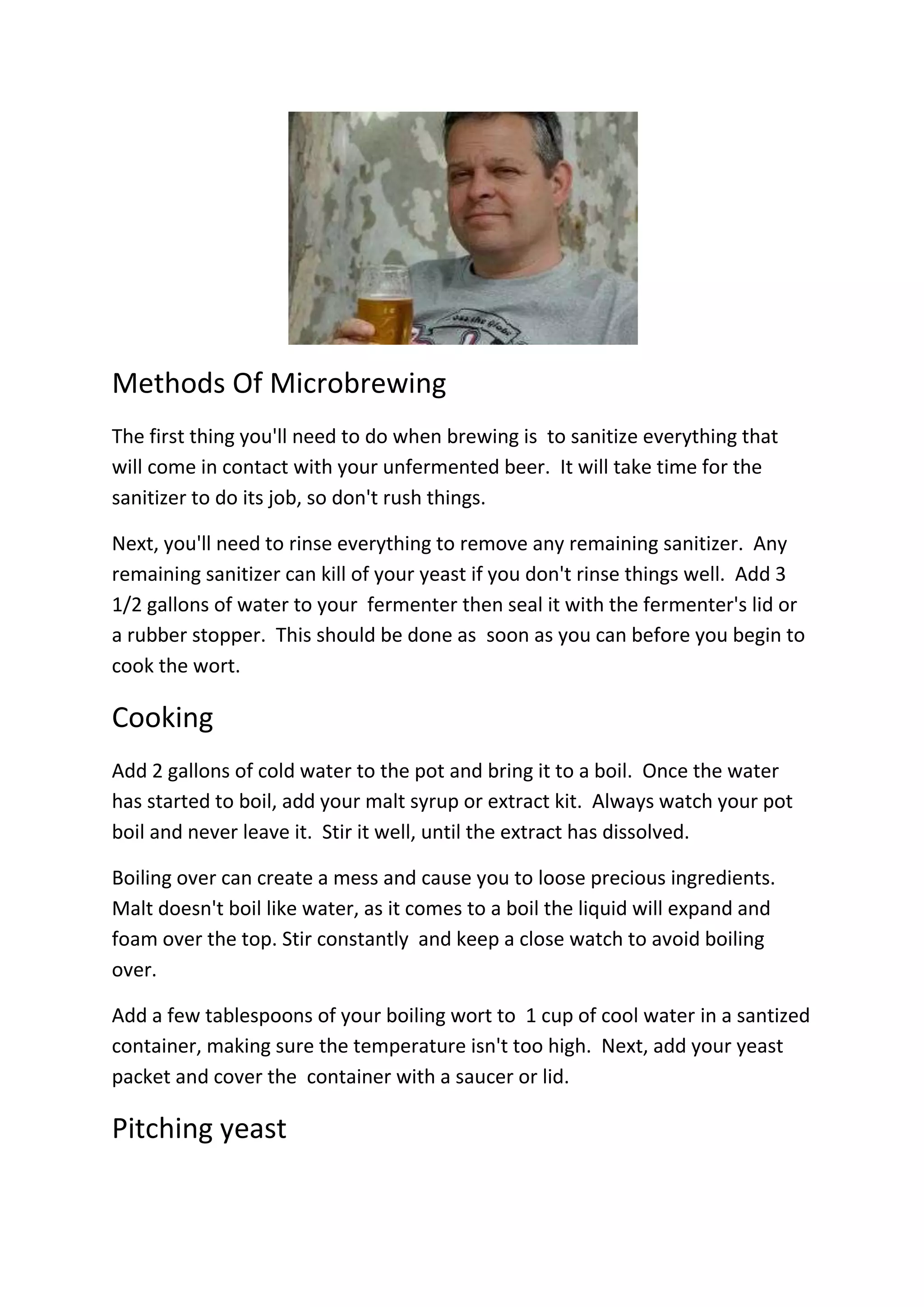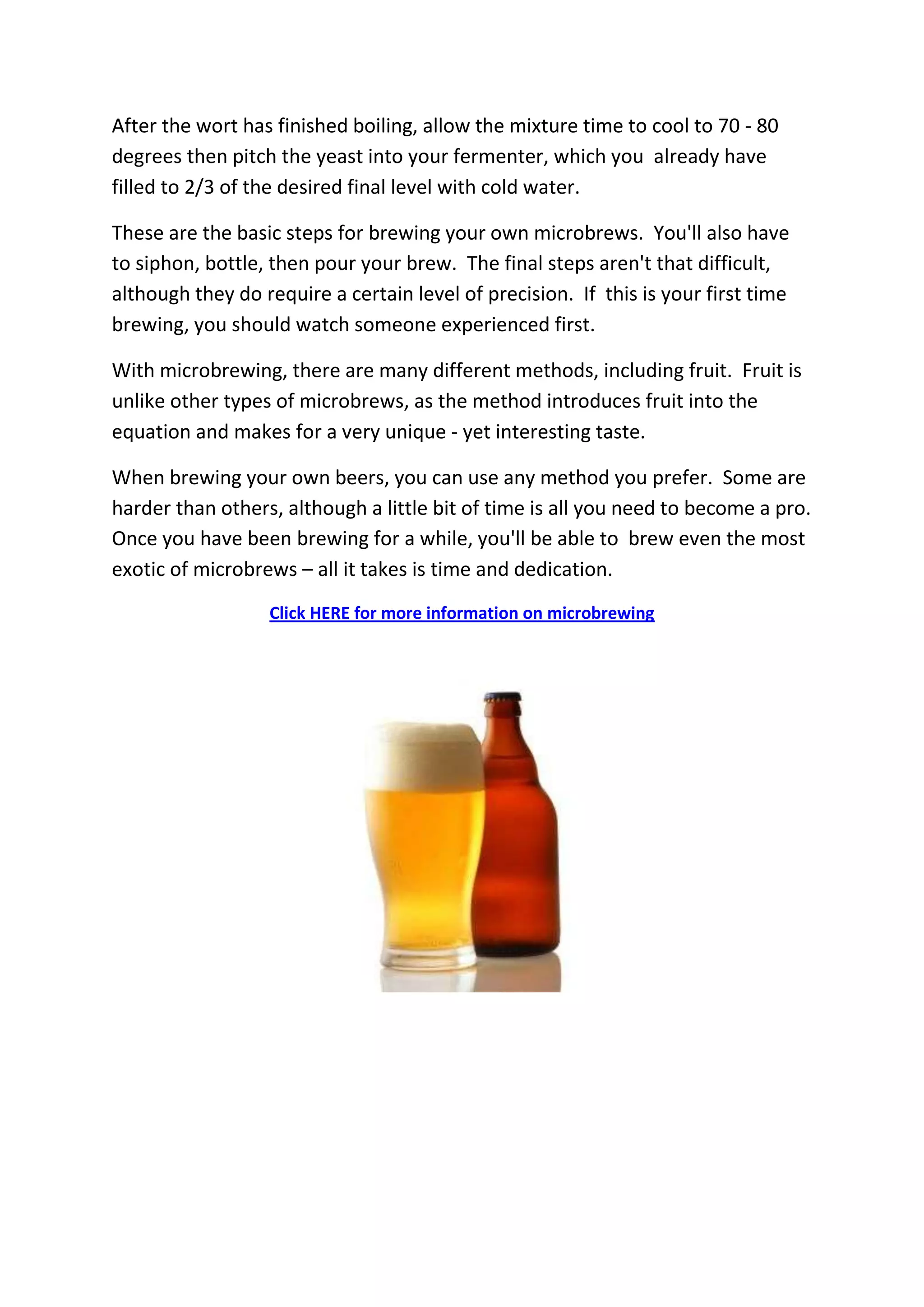The document discusses the rise of microbreweries in the United States, highlighting their evolution from a niche market to a prevalent industry with over 500 microbreweries today. It details the homebrewing process, emphasizing the importance of sanitization and proper fermentation techniques. The document also explores the experimentation possibilities in brewing, encouraging new brewers to develop their unique creations.



